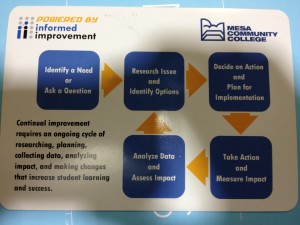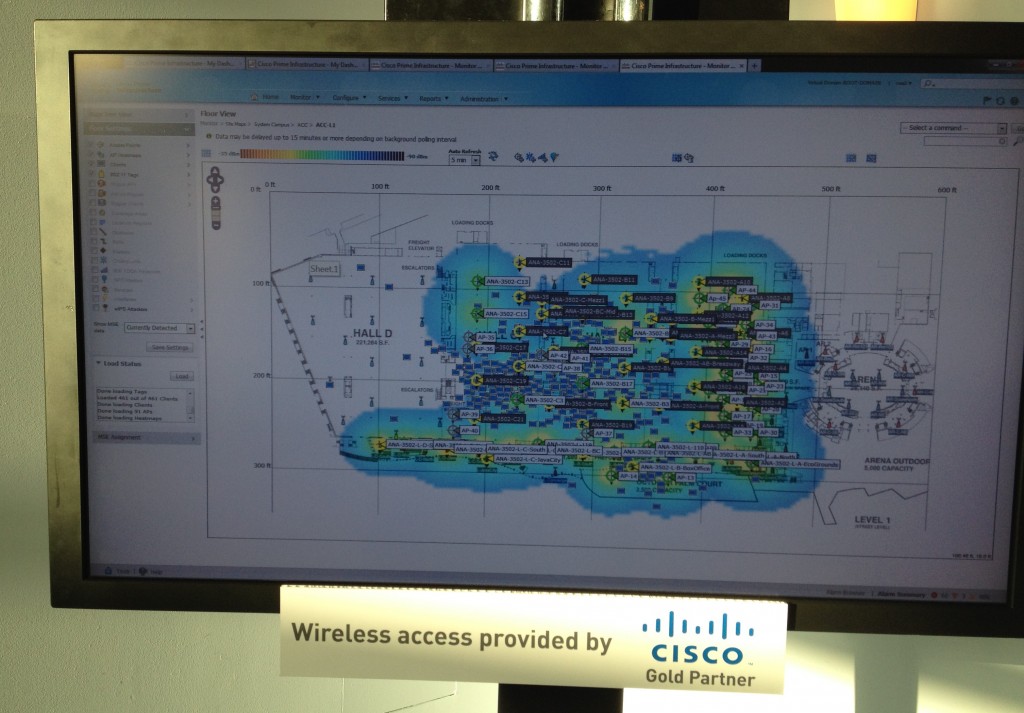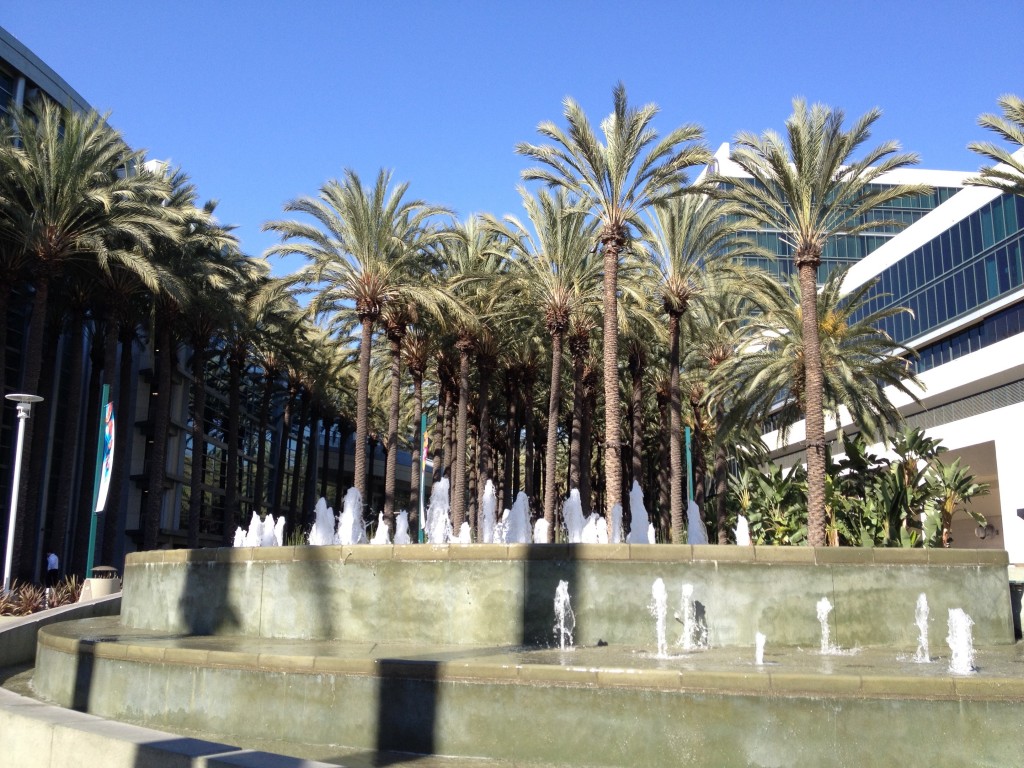Educause 2013 round up
Well another Educause annual conference has come and gone. It’s been a few years since I attended the annual conference so it was a joy to return. There were more sessions that I wanted to attend than I could attend. Several time slots had multiple presentations that I wanted to see. With more and more sessions recorded I can catch some of those later. My priorities this year were student success (retention/advising), analytics and vendors. We are implementing Hobsons Retain/AgileAdvisor/AgileGrad suite which includes a CRM (retain), case management advising (AgileAdvisor) and a degree planner (AgileGrad). I was also recently on the team architecting a reboot of our institutional research operation that will be the Office of Planning and Effectiveness so analytics are of particular interest.
Sir Ken Robinson
The conference kicked off with an entertaining and engaging talk by Sir Ken Robinson. This article captures much of the talk. The very telling video (below) shows one of his points, how you stifle innovation by asking the wrong questions.
[youtube=https://www.youtube.com/watch?v=9TskeE43Q1M]
Student Success and Analytics
Improving Student Outcomes through Integrated Planning and Advising Services (IPAS) highlighted work being done by the Gates Foundation with two schools to change how they do advising. ECAR data was shared on where 35 schools were at with IPAS-type tools. The majority of schools surveyed (>50%) have deployed degree audit, student-advisor communication tracking and early alerts systems. The next wave of tools are CRM, course recommendation, and degree planning. One question not represented in the data is how old the deployed systems are which could suggest the need for upgrades as functionality between classic and new tools varies. Clearly our current implementation of the Hobsons suite is in line with where many institutions are at. One of the schools, Montgomery County Community College (Blue Bell, PA) consolidated their student services into one building much like our Gage Center for Student Success. MCCC also is redesigning their entry to completion path for students. One of the schools noted that their students enjoyed the self-service tools but enjoyed using them with their advisors. The technology is augmenting the advising experience and not replacing it.
Managing Student Success Using Data-Driven CRM started off a bit like a Campus Management presentation but switched to Indiana State talking about their successes. The presenter was very focused on taking action as higher ed tends to talk and talk and not act. He did mention several interesting data-driven actions they took:
- returning students who were not getting their FAFSAs in were contacted to help them get it in,
- resident students on the meal plan who did not go to the cafeteria for two days were contacted by their RA to make sure they’re alright (the RA gets an email prompting them),
- students who dropped below 9 credits were contacted to get registered otherwise they risk losing financial aid (and the school would risk losing tuition),
- students who didn’t login to the LMS all week had their names sent to the faculty member over the weekend so they could reach out to the students on Monday.
They experienced a 5.4% rise in retention in 2 years. He was a proponent of the right message at the right time through the right channel. It’s great to hear how other schools are using their data. I plan to have us take advantage of what we can do with our new CRM.
Using Prescriptive Analytics to Reduce Course Dropout was an intersection between two of my topics of focus. It was interesting — really describing a process and method to go after specific goals. Clearly from a state university (UW Green Bay) in that there are some substantial resources behind it. Slide #3 was useful in illustrating the progression from descriptive (what happened and why?) to predictive (what will happen?) to prescriptive analytics (what can we do about it?).
Improving Student Success: Using Groundbreaking Analytics and Fast Data to Improve Student Retention once again intersected two of my focus areas — these topics are very intertwined. This session started out with information on how SAP has an in-memory database architecture called Hanna. Sounds intriguing. The crux of it is they’re bringing in data continually and accessing it continually. Also SAP donates licenses to 1300 schools. The speaker from U Kentucky was quite good. He is focusing on intervening early to affect the educational trajectory of the student. They took inspiration from the Signals project at Purdue. They are creating a K-score for students as a success indicator and making it readily available and using it to make suggestions for behaviors that improve it. They can micro-segment students through their own mobile app. They ask students micro survey questions to get a read on how they are. For example,
- have you bought your books?
- do you think you’re doing well?
- how many hours are you working this term?
- how stressed do you feel?
- do you intent to withdraw?
One novel approach to getting data and giving something in return is campus events — students can swipe ID cards at campus events. If a student swipes the student gets points and the school gets the data. Points can then be redeemed for something (he didn’t say what).
They have all this data so now what? They make it readily available across campus to appropriate people (of course no truly private data elements). The built a community of practice around data access and have a sort of etiquette rules people are expected to follow.
Leveraging Learning Analytics to Build a Culture of Evidence-Based Decision Making was a great session and ties in directly with what we’re trying to do. The talk was organized by using the dimensions of the ECAR analytics maturity index. We haven’t taken the survey to assess our index but I will be shortly. Mesa Community College (Arizona) is an “open pathways” HLC accredited institution. We’re AQIP and open pathways is looking like a better road to take. They embarked on a project, “informed improvement,” where everyone who makes decisions has access to data. They want to “democratize access to data analytics.” They really thought this out and created a process for everyone to follow — and put it on a magnet and gave it to everyone. That is brilliant. A little marketing can go a long way to foster organizational change.
Additionally the “informed improvement” team promoted the effort across campus and the president repeated this over and over. All important strategies to change a culture. Hopefully the slides will be online soon as there was more content than I could write down.
Service Delivery
Though not a focus of my trip, I did stop into The Help Desk Is Dead: Long Live the Service Desk. As we are considering an expansion of our student help desk into a campus-wide help desk the concepts behind a service desk resonate for me. Especially because many of the tenants are exactly how we’ve aspired to approach support:
- don’t stop at fixing the issue, find the root cause
- be efficient
- enable users to self-help
- manage costs
Over lunch I heard some good things about IT as a Service and the Future of IT on Campus. I’ll be watching that recording to see what I missed.
Vendors
I made several stops to current and potential vendors. One highlight was Canvas. It’s really the rising star in the LMS realm. I learned much about its features, architecture and pricing. I intend to get a free account to see it in action firsthand. They were highlighting the mobile interface and speedgrader. Wow. The student FTE pricing is in line with other SaaS tools we run however since moodle is nearly free (not truly free but not a significant direct cost) that is difficult to consider.
I was scheduled to stop by our ERP booth, Agresso by UNIT4, to participate in an interview. The booth was quite large and nice. eSchool Media (publisher of eCampus News you may recognize) was interviewing the Agresso education leadership and they wanted a customer there for additional perspective. It was a nice chat. I look forward to what comes of it. Agresso is one of the best-kept secrets at Educause. It’s a huge ERP in Europe and prevalent in Canada. In the education space it runs 75% of the UK higher ed institutions (if I’m remembering right). They want to increase their presence in North America.
Speaking of vendors, I like how they really show the technology in action — Cisco’s wireless displays were great. You could also see timeline graphs of the number of clients.
Parting Photo
Looking at my notes there were many valuable sessions. And I had some great conversations with colleagues (especially my Frye ’09 cohort!). The Anaheim weather was a nice reprieve from the coming winter. It was 50 degrees and raining when I left Minneapolis and 79 degrees and sunny in Anaheim all week.




This really is the fourth blog post, of your website I read through.
And yet I personally like this specific one, “Educause 2013 round up | ScottBlog” the most.
Regards -Carl